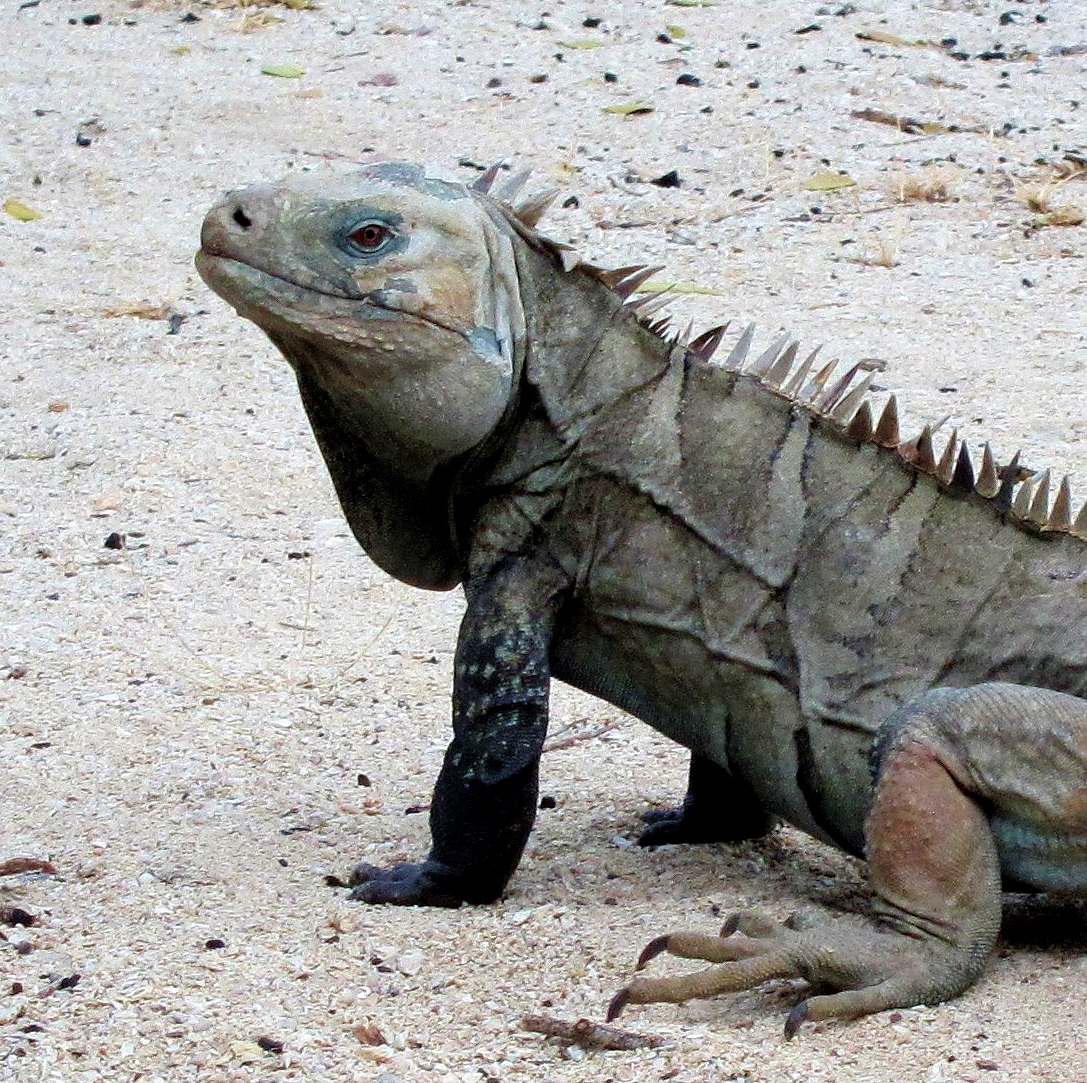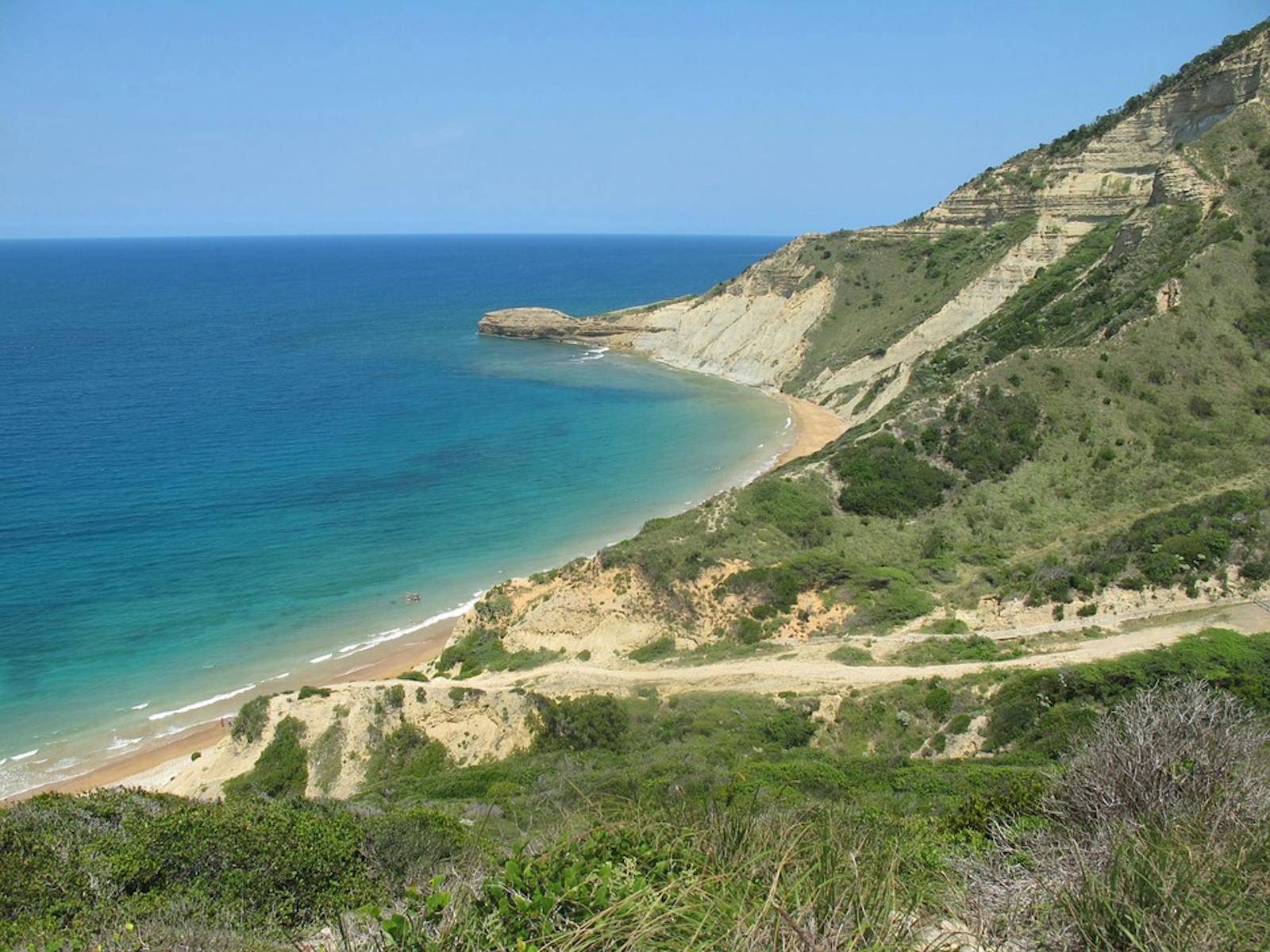Hispaniolan Dry Forests
The ecoregion’s land area is provided in units of 1,000 hectares. The protection goal is the Global Safety Net (GSN1) area for the given ecoregion. The protection level indicates the percentage of the GSN goal that is currently protected on a scale of 0-10.
Bioregion: Caribbean Islands (NT26)
Realm: Central America
Ecoregion Size (1000 ha):
1,553
Ecoregion ID:
532
Conservation Target:
37%
Protection Level:
6
States: Dominican Republic, Haiti
Ricord’s rock iguanas are endemic to the Hispaniolan Dry Forests ecoregion, particularly on the Dominican Republic side. Their primary habitat is dry thorn woodlands, and their total range is thought to be less than 100 km2, partly due to their particularity over the right substrate. These rock iguanas prefer soft soil overlaying limestone to make their burrows in very dry forest habitats, whereas the neighboring rhinoceros iguanas prefer a little higher up the hills and in more wet environments. These large lizards feed primarily on plants and plant parts but also opportunistically on insects and crustaceans as they become available. This iguana is highly adapted to this ecoregion and can survive almost anywhere else.

The flagship species of the Hispaniolan Dry Forests ecoregion is the Ricord’s rock iguana (Cyclura ricordii). Image credit: Yolanda M. Leon, Creative Commons
The areas occupied by the Hispaniolan Dry Forests ecoregion are located throughout the western two-thirds of the island of Hispaniola, making up about 20% of the vegetation. In the northwest of Haiti, the Hispaniolan Dry Forests extend along the coastal Lowlands. In the southwest of Haiti, it also covers some coastal patches along the southern Tiburón Peninsula extending through the Cul de Sac Valley, connecting with the Neiba Valley in the Dominican Republic, then continuing eastward to the coast. The average annual precipitation varies from 545 mm in the south to 980 mm in the north. The average annual temperature for this ecoregion is about 26°C.
The terrain in this ecoregion has variable topography, from flat near the coast to rugged on the slopes of the mountain ranges. Elevation varies from sea level to about 700 m. The natural vegetation consists primarily of species belonging to the cactus family and shrubs and trees adapted to the limited availability of water, often averaging 6-8 m tall. The principal tree species in this ecoregion include Prosopis juliflora (a kind of mesquite), sweet acacia, guaiac wood, Holywood, Spanish elm, and the endangered American mahogany. Sabal palm acts as an indicator species for transitions from dry forest to wet.
The fauna of this ecoregion is rich in diversity, and endemic species include the vulnerable Hispaniolan parrot, the palmchat, the endangered Hispaniolan solenodon, and the endangered Hispaniolan hutia. There are also numerous species of bats. Reptiles and amphibians are broadly represented in the ecoregion, including the endemics: the vulnerable Hispaniolan rhinoceros iguana and the critically endangered Ricord's iguana.
_-Parque_Nacional_Jaragua%2C_Republica_Dominicana-8-public%20domain.jpg)
Hispaniolan Parrot (Amazona ventralis). Image credit: Public Domain
The ecoregion has lost more than half of its original habitat; however, the degree of habitat fragmentation is average, meaning that there is still connectivity between the patches of unaltered habitat. In Haiti, this ecoregion is heavily degraded due to the demographic pressures in this country and is not included in any of the protected areas in the country.
Fortunately, in the Dominican Republic, this ecoregion is represented in the Jaragua and Isla Beata National Park, the Bahoruco Oriental National Park, the Cabral-Polo Ecological Corridor, the Sierra Martín García National Park, Isla Catalina Natural Monument, Eastern National Park, and the Monte Cristi National Park. Patches of dry forest can also be found in Sierra Bahoruco National Park and the El Aceitillar-Cabo Rojo Scenic Route.
The current main threats to the Hispaniolan dry forest ecoregion are the gathering of firewood, deforestation for development, and intensive land use for recreational purposes. This ecoregion has also been degraded by overgrazing land for cattle, goats, and donkeys.
The priority conservation actions for the next decade are to 1) develop sustainable forest material extraction management measures; 2) educate and encourage through various incentives natural resource integration of agricultural practices and sustainable grazing; and 3) secure protected areas within Haiti and connect them to protected areas within the Dominican Republic through biological corridors.
-
-
1. D’Ambriosio, U. 2018. Island of Hispaniola in the Caribbean https://www.worldwildlife.org/ecoregions/nt0215 Accessed October 4, 2018.
2. Jennings, P. and B. Ferreiras. 1979. Recursos energéticos de bosques secos en la República Dominicana. Instituto Superior de Agricultura, Santiago, República Dominicana.
3. Dinerstein, E., D. M. Olson, D. L. Graham, A. L. Webster, S. A. Primm, M. P. Bookbinder, and G. Ledec. 1995. A conservation assessment of the terrestrial ecoregions of Latin America and the Caribbean. DC.: WWF and The World Bank.
4. Ottenwalder, J. 1996. Cyclura ricordii. The IUCN Red List of Threatened Species 1996: e.T6032A12348520. http://dx.doi.org/10.2305/IUCN.UK.1996.RLTS.T6032A12348520.en Accessed on October 4, 2018. -
Cite this page: Hispaniolan Dry Forests. Ecoregion Snapshots: Descriptive Abstracts of the Terrestrial Ecoregions of the World, 2021. Developed by One Earth and RESOLVE. https://www.oneearth.org/ecoregions/hispaniolan-dry-forests/
-



